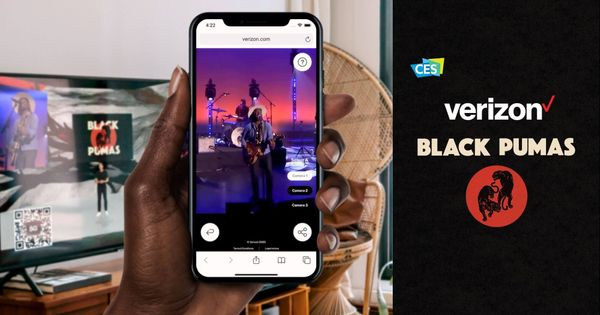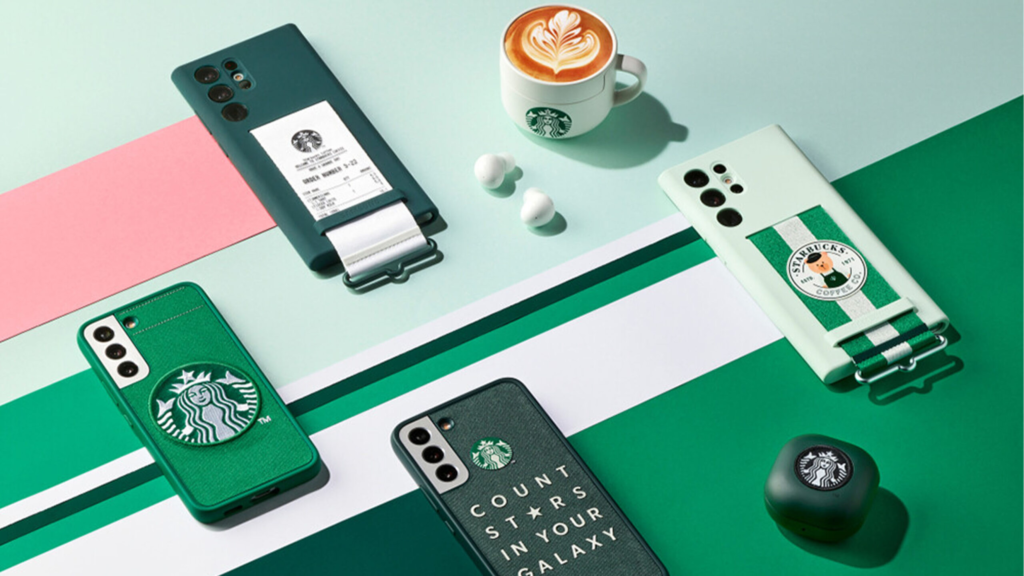
A 5-Minute Guide to Brand Partnering
How Strategic Co-Branding and Partnerships Harness Shared Values (and Resources) to Amplify Market Reach, Drive Growth, Spark Innovation and Reinvent the Customer Experience.
Brand Partnering, a strategic marketing tactic, has emerged as a powerful tool in the modern business landscape. That should come as no surprise since a whopping 71% of consumers claim they are positively predisposed to co-branded partnerships, with 68% of consumers reporting that they are swayed to make buying decisions after encountering partnership campaigns. And it’s clear, considering that 54% of companies credit these alliances with driving over 20% of their total revenue, that Brand Partnering yields tangible results.
Who Should Read This Article:
Business and marketing leaders, brand managers, and corporate strategists looking to explore the transformative power of co-branding and partnerships will find this article invaluable.
Top Insights Readers Will Gain:
• Key strategies for identifying and securing the ideal co-branding partner to complement and enhance your brand’s value.
• Real-world examples of successful partnerships that showcase the potential for expanded customer reach and innovative product offerings.
• Best practices and cautionary tales to navigate the complexities of co-branding, ensuring mutual benefits and sustained growth.
Decoding Brand Partnering
Brand Partnering is a strategic move that can be categorized into three main types: Ingredient Brand Partnerships, Composite Brand Partnerships and Collaborative Brand Partnerships – each type offering different and unique marketing opportunities for all parties.
Ingredient Brand Partnerships
Ingredient Brand Partnerships allow brands to highlight specific features or components of their products or services while leveraging the reputation and expertise of their partner. This type of partnership enables brands to showcase the added value or functionality that arises from the integration of complementary elements, appealing to consumers seeking enhanced capabilities or experiences.
In the 1980s, Brand Partnering gained traction, exemplified by Dell’s collaboration with Intel processors. This classic case of an Ingredient Brand Partnership saw Dell computers incorporating Intel processors, showcasing a partnership that maximized the technical strengths of both companies.
Composite Brand Partnerships
Composite Brand Partnerships provide brands with the opportunity to co-create entirely new offerings that capitalize on the strengths and expertise of both entities. By combining resources, technologies, or creative insights, brands can introduce innovative products or services that address unmet needs or preferences in the market. This type of partnership fosters differentiation and excitement, attracting consumers drawn to novel solutions and collaborative brand experiences.
Another iconic instance is the Nike+ iPod Sport Kit, a collaboration between Nike and Apple. This groundbreaking product blended Nike’s expertise in athletic gear with Apple’s technology to seamlessly track and sync workout data.
Collaborative Brand Partnerships
Collaborative Brand Partnerships offer brands the chance to extend their reach, influence, and relevance by aligning with complementary or aspirational partners. Through joint marketing campaigns, co-branded promotions, or via sponsored or shared events, brands can tap into each other’s audiences, cross-pollinating their customer bases and driving engagement. Collaborative partnerships enhance brand visibility, credibility, and memorability, fostering positive associations and affinity among consumers.
One appropriate example would be when Starbucks and Spotify collaborated to enhance the in-store experience for customers by integrating personalized music streaming through Spotify into Starbucks’ establishments. Customers can influence the music played in stores by using the Starbucks app to suggest songs, creating a dynamic and interactive atmosphere that resonates with coffee lovers and music enthusiasts alike.

Another example would be when Rose created the Yasnaya Polyana (Leo Tolstoy) Award for literature in the Russian market on behalf of our client Samsung together with the Tolstoy family and estate. In a groundbreaking collaboration, Samsung bolstered its brand image by aligning with the famous author and supporting local culture while enhancing the status of the Tolstoy brand by building one of the world’s most prestigious awards for novelists.
The landscape of Brand Partnering has seen a remarkable surge in recent decades, indicating its growing importance in modern marketing strategies.
The Pros of Brand Partnering
Brand Partnering offers a myriad of advantages that propel businesses forward in the competitive marketplace:
- Expanded Reach and Customer Base: Co-branding enables companies to access new markets and customer segments. For example, Etihad and Visa seamlessly integrate travel benefits with payment convenience through the Etihad Guest Visa card, enhancing the overall travel experience across the UAE and reaching a broader audience.
- Increased Sales: Collaborative partnerships can significantly boost sales by leveraging the strengths of each brand. As recently featured in the movie “Air” starring Matt Damon, Air Jordan’s long collaboration with Nike demonstrates this, as they merged Michael Jordan’s iconic brand with Nike’s innovative prowess, dominating the athletic footwear market and achieving unprecedented sales growth.

- Sharing of Technology: Partnerships facilitate the sharing of technology and expertise, leading to innovative product offerings. BMW and Louis Vuitton exemplify this through their luxurious collaboration, showcasing custom-designed luggage for the BMW i8 that combines luxury travel with automotive design excellence.
- Cost Efficiency: By sharing promotional and overhead costs, brands can execute marketing strategies more cost-effectively. Taco Bell and Doritos’ partnership is a prime example, as they infused Doritos’ bold flavors into Taco Bell’s menu, driving sales growth while minimizing marketing expenses.
- Corporate Social Responsibility: Brand Partnerships can also align with corporate social responsibility initiatives, enhancing brand reputation and consumer engagement. UNICEF and Target’s collaboration introduces Kid Power bands, encouraging children to stay active while supporting UNICEF’s mission to combat child hunger worldwide, demonstrating the positive impact of co-branding on social causes.
The Cons of Brand Partnering
While Brand Partnering offers numerous benefits, it also comes with its own set of challenges and risks that businesses must navigate effectively:
- Brand Mismatch: There’s a risk of brand misalignment and potential confusion among customers when partnering with another brand. For instance, if the brand images or target markets don’t align, it can lead to customer disengagement and loss of trust. Target and Neiman Marcus aimed to merge affordability with luxury but misunderstood their audience’s perception of “affordable,” leading to a disconnect with customers. The collaboration ended with heavy discounts to offload unsold high-priced items.
- Lack of Exclusivity: Exclusivity and transparency are key factors in forming and maintaining successful strategic alliances. Talks between Apple and PayPal for Apple Pay integration fell apart when Apple discovered PayPal’s collaboration with Samsung, demonstrating the fragility of trust in partnership negotiations.

3. Conflict of Values: Partnerships must reflect shared values, especially in response to evolving public and consumer advocacy. The longstanding LEGO and Shell partnership involved co-branding initiatives where LEGO produced promotional toys featuring Shell’s branding, often distributed as part of marketing campaigns at Shell gas stations. However, the partnership faced backlash from environmental activists and concerned consumers who criticized Shell’s environmental practices, leading to LEGO ending the collaboration due to public pressure over environmental concerns.
4. Exploiting Customers: Consumer consent and preferences should be at the forefront of promotional strategies. Apple and U2’s partnership to preload “Songs of Innocence” onto iTunes users’ libraries without consent backfired, irritating users who felt their choice was undermined. The initiative damaged the reputations of both Apple and U2. Understanding and aligning with customer expectations is crucial in co-branding ventures.
While Brand Partnering can be a powerful strategy for growth and innovation, it’s crucial for businesses to carefully consider the potential drawbacks and take proactive steps to mitigate risks and ensure successful collaborations.
Mastering Brand Partnering
Successful Brand Partnering begins with selecting partners whose values, mission, and audience align seamlessly. This alignment ensures that the partnership resonates authentically with both brands’ audiences, fostering genuine connections and driving meaningful engagement.
Clear and open communication is the lifeblood of any successful partnership. Establishing transparent channels for dialogue and setting clear expectations from the outset lays the foundation for trust and collaboration. It’s crucial to articulate each party’s roles, responsibilities, and objectives, ensuring alignment and minimizing misunderstandings along the way.
A mutually beneficial relationship is the hallmark of a successful brand partnership. Each party should bring unique strengths and assets to the table, creating value that extends beyond individual capabilities. By identifying shared goals and leveraging complementary resources, brands can unlock new opportunities for growth and innovation while delivering added value to their audiences.
Navigating the legal and financial landscape of Brand Partnerships requires diligence and foresight. From drafting comprehensive agreements to defining financial arrangements, it’s essential to protect both parties’ interests and mitigate potential risks. Investing time and resources in robust legal and financial frameworks upfront can safeguard against disputes and setbacks down the line.
Anticipating and addressing potential conflicts is a proactive approach to preserving the integrity of the partnership. By conducting thorough assessments of values, objectives, and potential areas of tension, brands can preemptively identify and mitigate sources of discord. This proactive stance fosters a collaborative environment where challenges are met head-on, leading to stronger, more resilient partnerships.
Balancing the dynamics of a brand partnership is both art and a science. Striking the right equilibrium ensures that each brand maintains its identity and voice while contributing to a harmonious whole. By embracing diversity and leveraging each other’s strengths, brands can cultivate a dynamic partnership that elevates both parties and delivers lasting value to their audiences.
The Future of Brand Partnering
As the marketing landscape continues to evolve, Brand Partnerships stand at the forefront of innovation, poised to redefine the very fabric of consumer engagement. With emerging technologies like augmented reality (AR) and virtual reality (VR), brands are venturing into immersive experiences that blur the lines between the physical and digital realms.

Verizon’s collaboration with The Black Pumas and Snapchat on the ‘5G Built Right for Snapchat’ campaign stands out as a prime example. By leveraging AR technology, Verizon showcased its 5G network capabilities and Snapchat promoted its new features through a virtual concert experience. Lead singer Eric Burtons performed in AR in front of iconic landmarks like the New York Public Library, enriching the surroundings with vibrant colors and dynamic visuals. This fusion of 5G technology, location-based content, and live entertainment demonstrates the potential of AR in elevating brand messaging and customer engagement.
Of course, technology on its own won’t drive innovation. Most often Brand Partnering success is achieved through creativity and the union of two brands that magically find a 1+1=3 formula for success, sometimes in surprising ways.
Take, for instance, the collaboration between IKEA and ASUS ROG, where gaming meets interior design. By combining their expertise, IKEA and ASUS ROG have crafted a collection of gaming furniture and accessories that seamlessly blend style with functionality. From ergonomic gaming chairs to cable-managed desks, this partnership exemplifies the convergence of lifestyle and technology, catering to the growing gaming community’s needs in a stylish and practical manner.
Even in the business-to-business realm, brands like Semrush and Surfer are revolutionizing the way marketers approach search engine optimization (SEO) with their collaborative integration. By integrating their respective tools, these industry leaders empower marketers to enhance their link-building strategies, driving greater efficiency and effectiveness in digital marketing campaigns. This partnership not only benefits their existing customer base but also extends their reach to new audiences, showcasing the power of collaboration in driving brand awareness and customer engagement.

Moreover, brand collaborations are transcending traditional boundaries, as seen in the partnership between Starbucks and Samsung. By joining forces, these iconic brands have created a limited-edition line of coffee-themed accessories, blending technology with fashion in a truly innovative way. From themed phone cases to stylish earbud covers, this collaboration demonstrates the potential for brands to leverage their unique strengths and create products that resonate with consumers on a deeper level.

Even unexpected collaborations, such as Oreo and Supreme, are reshaping the brand landscape by tapping into niche markets and sparking consumer excitement. By combining the iconic Oreo cookie with Supreme’s streetwear fashion aesthetic, this partnership has captured the attention of fans worldwide, underscoring the importance of creativity and authenticity in brand collaborations.
As we look ahead to the future, one thing is clear: the possibilities for Brand Partnerships are limitless. By embracing innovation, creativity, and strategic collaboration, brands can unlock new opportunities for growth and differentiation in an increasingly competitive marketplace. The future of Brand Partnerships is not just about collaboration—it’s about creating experiences that captivate, inspire, and resonate with audiences around the globe.
A Shameless Plug
Looking to elevate your brand through strategic partnerships? Let us be your partner in success. Rose has extensive experience negotiating and managing collaborations for major brands like Samsung, Lexus and Tabasco. We’re here to help you unlock new opportunities and drive growth. Give us a shout.
Sources:
Hubspot
Statista
Association of National Advertisers



